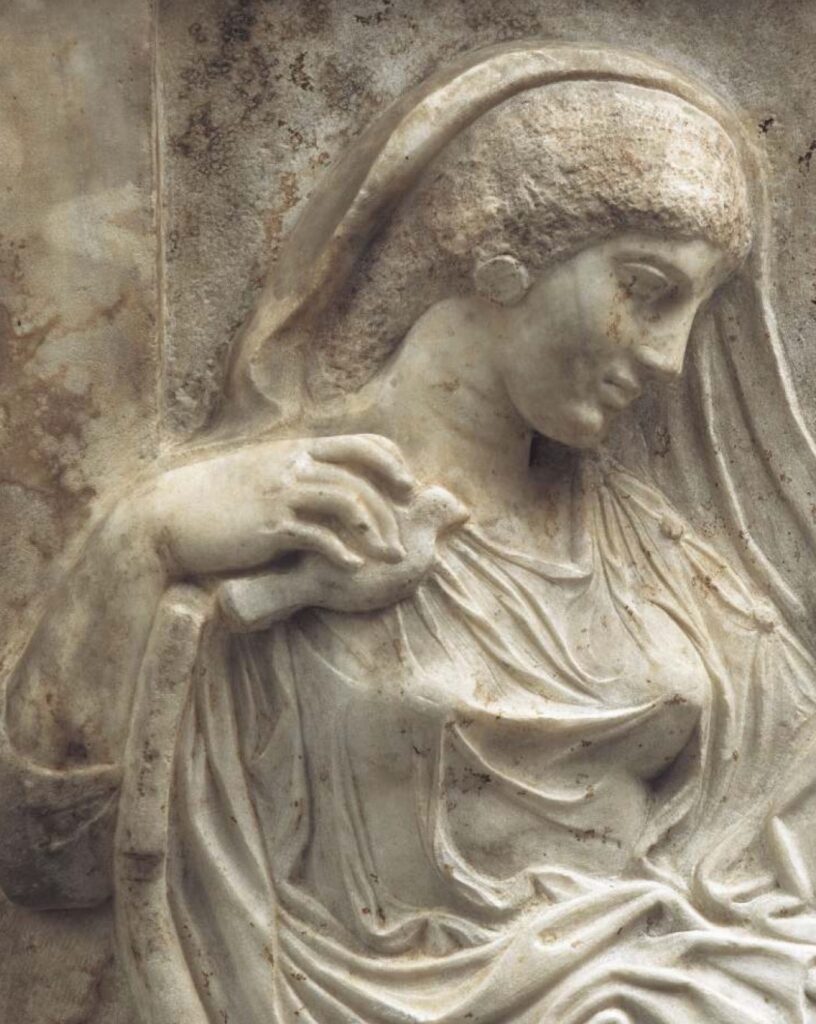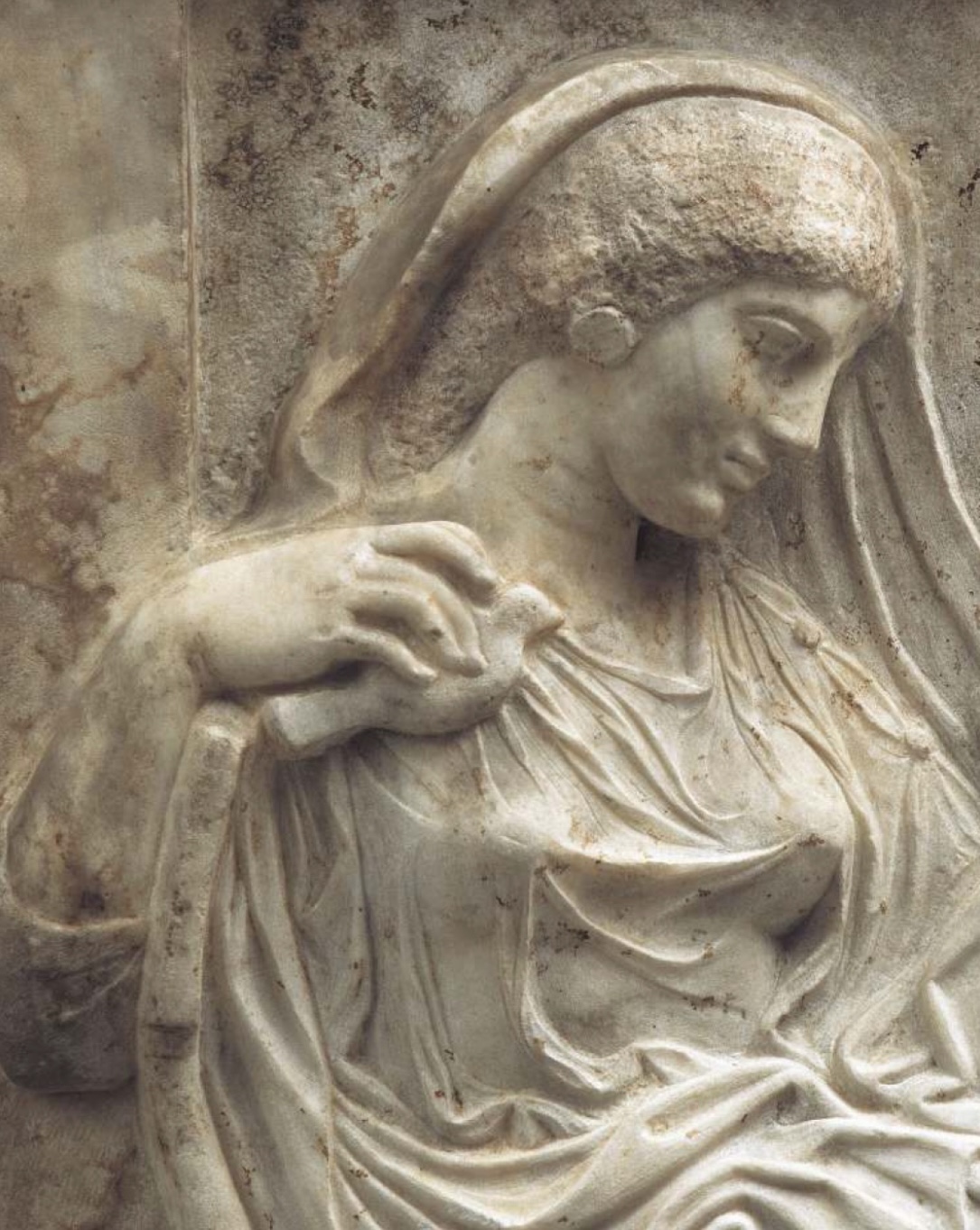There’s not much better than High Classical relief sculpture, and this Athenian grave stele carved in the decades after the famed Parthenon frieze is second to none. Languid in her chair a young woman is gorgeously draped, with the crinkly fabric of her chiton dripping over her breasts to puddle in her lap and delicate buttons securing the sleeve. Her mantle is brought over the head as a veil and envelops the infant she holds.


I’ve cropped out the baby in the first photo (cradled like a bowling ball over her lap), because frankly he interests me less than the serene young woman herself. Especially delightful and unusual is the way her arm is draped over the backrest of the chair, deft fingers dandling a bird-shaped toy.
The inscription on the frame above the intimate scene names the young woman, Ampharete, commemorated having likely died in circumstances related to childbirth – a hazardous business that wealth and rank could not protect against in the pre-modern world. It’s a particularly sensitive example of a type of grave marker used widely in the late 5th and 4th century B.C., where the child is included to ratchet up the emotional tenor and bring home the poignant theme.




